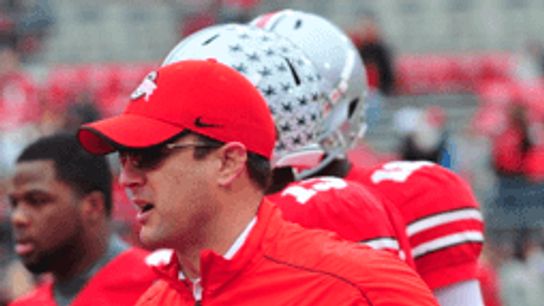There is no team on which the humans and the computers disagree more than Texas. The Associated Press has the Longhorns at No. 6. The Coaches' Poll puts them at No. 7. The FWAA-NFF Super 16 poll has them at No. 7 as well. More than halfway through the season, the humans look at Texas and see a national championship contender.
The computers... do not.
S&P+ ranks the Longhorns, 6-1 overall and 4-0 in the Big 12, as the 38th best team in the country and fifth best team in its conference. FEI has Texas at No. 26 in the country and No. 3 in the Big 12.
It's easy to understand why. Texas is essentially two teams sharing the same set of uniforms.
One of them is a top-5 team, a unit that tore through USC (ranked at the time before falling apart), TCU (ditto) and Kansas State by a combined score of 84-16 over a 7-quarter span. Their first three quarters against Oklahoma stand among the best three quarters anyone in the country has played this season, building a 45-24 lead over the Sooners on a neutral field. They've gone on other runs as well -- 22-0 against Maryland, 21-0 against Tulsa, 17-0 against Baylor -- that, when taken with the other evidence, point to a team that can win every game it plays.
And then there's the other Texas team, the one that tries its damndest to undo the other side's work.
This is the team that fell behind Maryland 24-7 to open the game, then surrendered 10 straight points after taking the lead.
It's the team that allowed Tulsa and Kansas State, neither of whom scored a point in the first half, to force a one-score game late in the fourth quarter. In fact, Kansas State and Baylor possessed the ball with a chance to win the game after facing 19- and 13-point halftime deficits. Baylor even threw into the end zone (twice!) in the final 10 seconds with a chance to win.
It's the team that allowed Oklahoma to erase a 21-point deficit in less than eight minutes -- while snapping the ball only 10 times.
This split personality is Texas's identity, as well as it's head coach's.
At Houston, Tom Herman was elite against the elite and mediocre against the mediocre. His 2015 team went 13-1, won the American, beat Florida State in the Peach Bowl and finished No. 8 in the poll. They also lost to a 6-7 Connecticut team.
His 2016 team beat eventual Big 12 champion Oklahoma to open the year, rose to No. 6 by October and knocked off No. 3 Louisville in mid-November, but finished its regular season at 9-3, including a loss to 5-7 SMU.
In his fourth season as a head coach, Herman's teams are 10-4 against ranked opponents. All four losses came last year, when his team played a freshman quarterback (Sam Ehlinger); three of the opposing quarterbacks are now in the NFL (Sam Darnold, Baker Mayfield, Mason Rudolph) and another was a senior (Kenny Hill). Even despite that, those Longhorns lost to USC in double overtime, to Oklahoma by five, to Oklahoma State in overtime, and held fourth quarter leads in all three games.
The evidence shows Herman's teams are among the best in the country at getting up for big games, but often struggle to match that level of energy and focus as heavy favorites.
But it goes further than that, at least this season
The 2018 Texas team has shown the propensity to play up and down to its competition within the same game. We've seen it in all those blown or nearly-blown leads. Texas plays as hard as it has to to build what should be an insurmountable lead and then does juuuust enough to hold to it by the hair on their chins.
No statistic summarizes this more than the Longhorns' score by quarter through seven games:
First quarter: 44
Second quarter: 84
Third quarter: 63
Fourth quarter: 17
Texas's 17 fourth quarter points doesn't even tell the full story. They've scored three points -- total -- in their last three fourth quarters, frames that saw UT nearly blow leads of 19-0, 45-24 and 23-10.
There are three divergent paths from here.
It's possible that Texas is in the midst of a charmed season, cashing in on its bad luck 2017 season that saw the Longhorns go 1-4 in one-score games. This is the most unlikely explanation, although the 'Horns have cut down their turnovers from 1.38 a game in 2017 to 0.86 thus far this year.
It's possible that Texas grows out of this immaturity and puts together four complete quarters week in, week out. We were robbed of seeing this possibility in their most recent game, Oct. 13 against Baylor, when Ehlinger went down with a shoulder injury on the opening drive. He's expected back this week against Oklahoma State (8 p.m. ET, ABC).
Or Texas doesn't grow out of this and it comes back to bite them down the stretch. This is clearly what the computers believe will happen. In fact, S&P+ predicts a 7-point Oklahoma State win on Saturday.
Either way, we're about to find out. Three of the Longhorns' final five opponents (Oklahoma State, West Virginia and Texas Tech) are among the top 20 scoring teams in the country, plus an Iowa State team that's averaged 39 points a game in two wins since inserting freshman quarterback Brock Purdy into the lineup. The one (1) solitary point Texas has averaged over its last three fourth quarters won't cut it much longer.
To quote Robert Frost: "Three roads diverged in a college football season, and any one of them was fascinating to watch." Or something like that.
